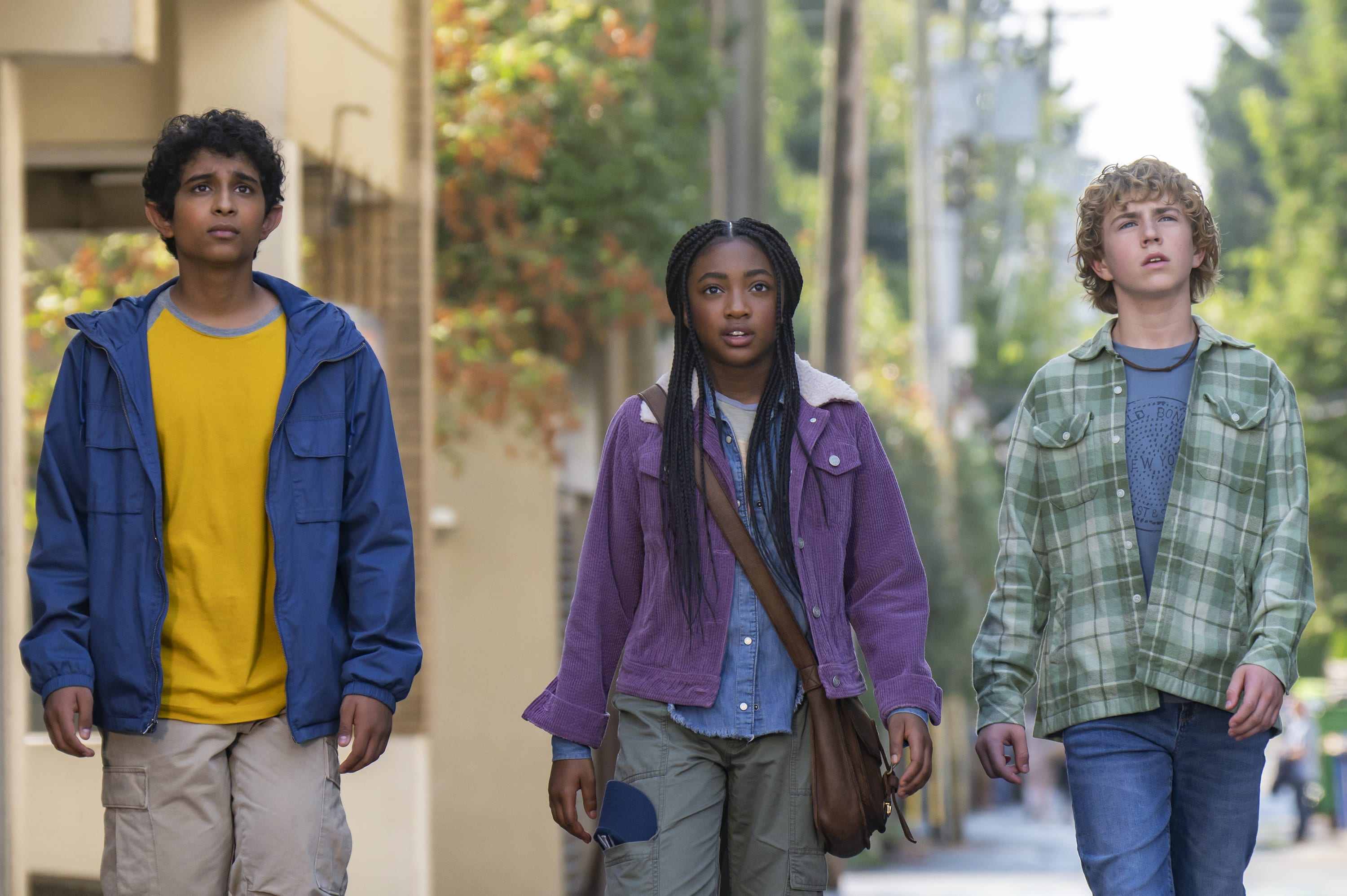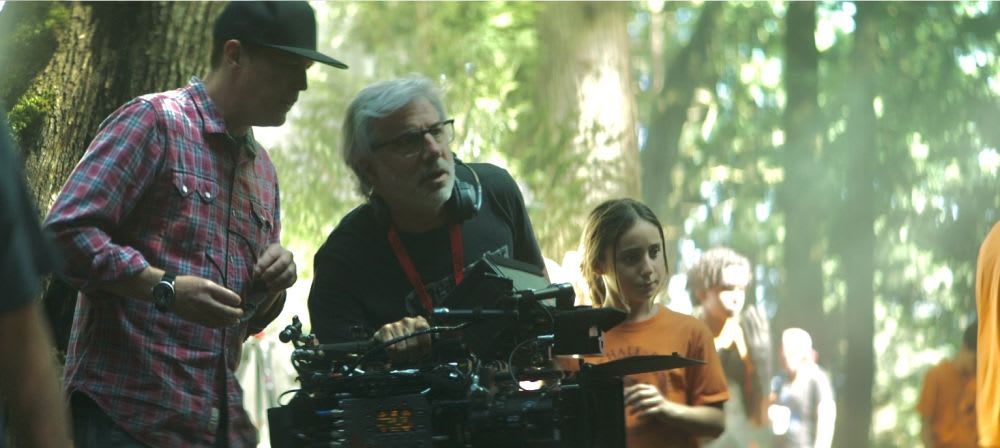'Percy Jackson' cinematographer on underwater realism and doubling Vancouver
Pierre Gill reveals the one of a kind blue screen built for 'Percy Jackson and the Olympians'
By Gabriella Geisinger 30 Jan 2024

Cinematographer Pierre Gill was adamant that Disney Plus' TV adaptation of Rick Riordan’s book series Percy Jackson and the Olympians wasn’t going to look like your standard fantasy epic, despite what its title leads you to believe.
"We tried to do the show as real as possible. It wasn’t a superhero, Avengers thing. That was not the goal," Gill says.
This foundation of realism influenced everything Gill did. “[From there] you start your language of movie making. It's about the framing and the lens. Like with the gods, I didn’t put a low angle with a big god looking at you [the viewer] from above. Instead, we had this very strong, very character driven lens.”
Lighting and colour grading was also important in Gill’s efforts to keep the story grounded. “We have a lack of colour right now. Every show is desaturated or monochromatic and this looks great, I love it, but it's very easy to do compared to keeping colour.” Gill was adamant about showcasing the actors’ faces: Walker Scobell as Percy Jackson, Leah Sava Jeffries as Annabeth Chase, and Aryan Simhadri as Grover Underwood. “I wanted to have skin tone and I wanted to see the [actors’] eyes.”
Keeping "realism with elegance”, as Gill calls, it, while filming the underwater scenes created several challenges. To film as much in camera as possible, the production team built a water tank inside the soundstage at Mammoth Studios in Vancouver.
"There's no VFX or CGI fake water. It was very important to the show runners and executive producers Dan Shotz and Jonathan Steinberg to shoot it for real.”
Fortuitously, Gill was already well versed with underwater filming. Amongst Gill's many credits is Denis Villeneuve's Blade Runner 2049. "Of the things in particular I knew, because of my experience on Blade Runner, is it's very frustrating to light underwater. It's really hard because the light floats. You have to put bags down, you need divers just to move a light. It's not fun.”

Instead, Gill lit the underwater scenes from above the tank and controlled them from his lighting board. He then tasked the team at Mammoth studios with building a backlit underwater blue screen to not only light the underwater scenes, but provide the necessary wall for the LED Volumes being used on the show.
"We had this humongous blue wall, 20 feet long or 30 feet long. It was deep, with lights inside and bouncing back on the blue screen.” This negated the need for complicated underwater lights while they could also turn it off to replicate the murky expansion of water.
Vancouver goes around the world
As Percy goes on a journey from humble New York City kid to demigod, the show also goes on a journey. Shot exclusively in Vancouver, Gill and production designer Dan Hennah were able to double the Canadian city for the big apple. They found a street that had similar architecture to New York and dressed the street with yellow taxi cabs and New York City street signs.
“We had a unit go to New York and shoot plates from a helicopter You have a big establisher [shot] flying over Central Park, then you cut to a street that you shoot on location — that could be in Toronto, Vancouver, Montreal or in Paris.”
CG and VFX work went into creating a seamless doubled location. Gill cites Episode 1, in which Percy is on a roof looking out over the city. They shot at a school in Vancouver, surrounded by buildings that had similar architecture to New York but were too low. “In post they added [the height of] New York City in the background.” Similarly, they shot high resolution interior and exterior shots of the Metropolitan Museum and ILM, which Gill calls “the gods of post and volumes”, rebuilt them in 3D.
Filming in the Tunnel of Love
The advantages of volume work, particularly with the expertise of ILM, were numerous. Working with children requires specific scheduling, and not having to worry about weather, permits, and unforeseable incidents impacting schedules was a big boon. But there was a learning curve for Gill as well.
"It's a very high technology tool, so you need the resources and the money to do the things we did.
“I always give the example of Star Trek. It's easier to put a wall that has buttons and light it, and dress somebody in a blue shirt with a white stripe because you as a viewer, you don't care that it's not real. You're fine, because it's sci-fi and you're happy – so works.
“But the Met requires a lot of work: The background, the lights, the columns, the statues, everything that is not real [in the soundstage] really has to work.”
To achieve the realism the show runners wanted, Gill did a lot of testing with different lenses until he found ones that allowed him to use the least amount of VFX in post. “At the end of [the final episode], there's this gorgeous volume. It's almost all in camera, I'm very proud. The tunnel of love is all in camera by me. The only touch up was to erase the witness camera. And that was an amazing success.”
Latest news & features
Featured profiles
Promote your services with KFTV
Choose from three profile types - Basic, Silver and Gold
Create ProfileWe offer a range of display advertising opportunities.
Learn More